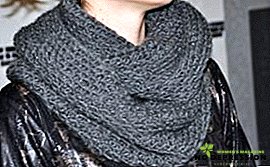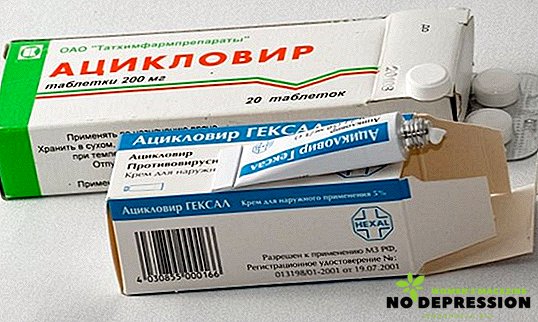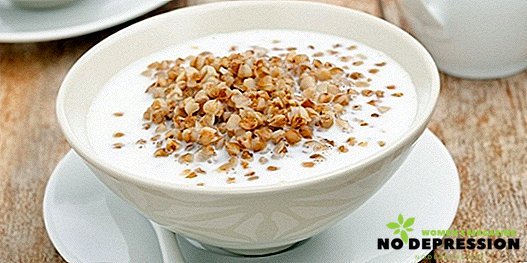English knitting, it is - an English gum, is considered the main pattern that can be knitted without any special knowledge of complex loops. It is enough to understand a simple scheme of the front and back sides.

Features of English mating
The main feature of English knitting is the need for more yarn. Therefore, to begin with, it is necessary to tie the sample in order to estimate the real density.
Advantages of the English gum:
- pomp and volume of the product;
- independent use of the pattern without using other styles;
- original look;
- keeps its shape well when knitting hats, scarves, socks and other things.
Yarn for knitting with such technique is suitable for medium thickness and thick, so that the product turns out to be more dense and bulky. Knitting needles should be selected, focusing on the yarn. The thicker the thread, the larger the diameter of the spokes. Here it is very important to remember that the thicker the yarn, the resulting product will be stronger drawn, but the binding will be larger and deeper.
 The elasticity of the fabric can affect the outcome of the work, so you need tight knitting without any poor-quality joints. For the same reason, this elastic should not be used for the sleeves or the bottom of the garment, as it does not hold the shape well.
The elasticity of the fabric can affect the outcome of the work, so you need tight knitting without any poor-quality joints. For the same reason, this elastic should not be used for the sleeves or the bottom of the garment, as it does not hold the shape well.
With this method, the front and back sides are no different from each other. In the center of the rapport, you can see a pigtail, giving the product an attractive look. Sometimes when knitting using threads of different colors, which makes the fabric more interesting.
English mating is often confused with pearl. In the second - the sides are different from each other. One side looks like an English gum, while the other side resembles a pearl pattern. The reason for this difference lies in the technique: English mating will be performed with nakida in each row (because of this, it is also called patent elastic), and pearl - with nakida through a series (semi-patent).
Technique and scheme of knitting English gum (knitting)
1 way:
- It is required to collect an odd number of loops, two of which are edging. The first is always removed, the last - knit purl.
- The first row begins with the removal of the first loop. Then there is the alternation: first, we knit a facial one, do a nakid, remove the next one, without knitting. The filmed nakida loop is called patent.
- Then just start and end edge. The main row is knitted according to the following principle: before the back of them a nakid is made, and the loops themselves are removed, while remaining untied. Double crochet loops knit facial. Then repeat in the same sequence to the required length.
2 way:
- Here, as in the previous version, an odd number of loops is gathered, including two edge loops. The first one is removed, and the last one is knitted on the wrong side.
- In the first row, first remove the edge. After, starting with the face, alternate it with the purl. Finish edge.
- In the second row, the purl is knitted from the purl, and the front one is knitted from the underlying (transverse) loop.
- Further rows fit in the same way as the second.

3 way
Another method of English knitting is a double elastic band. It is usually used for knitting the top of socks, scarves, cuffs to make the fabric look more dense. The technique is quite simple:
- In contrast to the gum 1№1, here is recruited an even number of loops, divisible by 4 + two edge. The first one is always removed, the last one is knotted in the wrong way.
- The first row fits the usual 2x2 rubber band.
- Second: after the first loop, we make two facial ones, then two patents. Repeat until the end of the row.
- On the next row, the nakida with knots removed knit facial. Before purl nakid again, the loop is removed.
English viscous hat
The hat, made in the technique of English gum, has many advantages:
- easy to pull;
- it turns out volume;
- soft;
- warm.
Before you begin work, it is best to tie the sample, measure it. This is necessary to understand how many loops will be needed for a given girth of the head. If you suddenly get an even amount, you can make one more or less.
When the number of loops is determined and dialed, perform the following steps:
- We knit the first two rows with an ordinary 1x1 rubber band, so that the bottom of the hat is tighter and sits well on the head.
- Then you can work in two ways, starting and ending with the edge ones.
In the first, facial and patent loops alternate. In the second: the purl is tied to it, and the front one - from the underlying loop.
- The fourth row in the first embodiment: before each purl nakid is made, and she herself is simply removed. Double crochet loop is knitted. According to the second variant, this series is connected in the same way as the third.
- We continue the above item to the desired length. The length is determined by measuring the distance from the neck to the forehead. You can make it shorter, but in this case it would be inconvenient to wear her hair.
- To remove the volume at the top of the cap, we knit 2 rows with an ordinary elastic band.
- The penultimate row is knitted, connecting 2 loops to one face (the last 2 will be purl, as they take the edge loop). The latter is a purl.
- We take the needle for stapling. We thread the thread about a meter in size, tighten the top, sew the edges.
Upstairs there will be a small hole, which, if desired, can be closed by a pompon.
English Scarf Loose Scarf
As well as for knitting hats, English knitting is great for scarves.
Snud, or scarf-collar - the modern name of the scarf, connected in a circle without beginning and end. He decided to wear over his head. You can wrap in one, two or more turns. This model is suitable not only to the classical style, but also goes well with sports. The scarf collar does not have a gender difference, so it is great for both women and men.
Apply snood as a usual scarf or headdress, which keeps the hairstyle intact. There are also tails not stitched into a ring. These usually have a button closure.
Scarf-yoke in one turn in a circle:
 We collect 90 loops.
We collect 90 loops.- Since this snud is knitted in a circle, we begin to knit from the side where there is no residual thread. There is no edge in this way.
- The first round begins with the wrong side, after which we alternate it with the front ones.
- The second one: before the purse, a nakid is made, then it is removed, the next - the front one. Continue until the end of the circle.
- In the third - purl with nakida knit together. A nakid is again made in front of the face, the loop itself is removed.
- Fourth: in front of the purse, a nakid is made, and the purl itself is removed from the back wall. Double crochet loop is knitted.
- Then alternate the fifth and sixth steps to the desired length.
- In the last lap, we knit the caps together with the purl. Then, without doing any nakida, knit facial.
- Closing the loops: two loops together knit together the front. We hang the resulting loop back onto the left knitting needle, then knit the two together again. We continue this way until one loop is left. Then cut the thread and tighten.
Snud seamless two turns (without nakidov):
- In order for the LIC to collapse in two turns, we type approximately 220 loops.
- This scarf-collar is performed seamlessly in a circle, therefore, as in the method described above, we start from the side where there is no residual thread. There will be no edge loops.
- The first 6 laps are knitted completely with facial. This will give a slight waviness to the product.
- Seventh knit usual 1x1 rubber band.
- In the next round purl knit purl, and the front - from the underlying loop. After the circle is tied up, we turn the future snud and repeat the same actions to the desired size.
- The last 6 laps, as in the beginning, fully knit facial.
- Close the binding in the standard way.
Scarf-collar double english elastic knitting needles
In addition to the methods of knitting in a circle (lengthwise), you can tie a scarf-collar across, connecting it with a stitch.
- First you need to dial the number of loops, a multiple of 4, and two edge. The number of loops is determined by the width of the product. For example, you can dial 64 + 2. As usual, the first one is removed, the last one is knitted from the other side.
- The first row fits the usual 2x2 rubber band.
- Next, we perform according to the above described method of knitting English knitting, namely: two facial, two patent. And so on until the end of the series.
- Subsequent rows of nakida with knots removed knit facial. Before the purses, the nakida are again made, and the loops themselves are removed.
- It is closed as always. Two loops are knitted with facial loops, until the last one remains. Through the last we stretch the thread and tighten it.
- Connects the tail with a seam that is knitted with a hook or needle.
Scarf-collar, or snud, can be of any size and any width at the request of a needlewoman. When knitting circular scarves most often used technique English gum, as it is the easiest and fastest way.
Having considered several ways of English knitting, you can conclude that everyone can use it: from beginners to pros in needlework. Even for beginners, the pattern can be very neat and elegant, as this technique does not require much knowledge.
The canvas, obtained by tying English gum, looks elegant, lush, retains heat, which can not leave anyone indifferent.


 We collect 90 loops.
We collect 90 loops.









